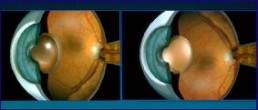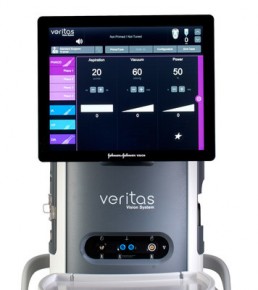Microincision Cataract Surgery
The most common symptoms of cataract development are blurred or fuzzy vision and sensitivity to light.

Introduction to Cataracts
Cataract surgery is in the midst of a technological revolution. Advances in microincision surgery and lens implants continue to improve the results we can offer our patients. The physicians and staff at Ullman Consultants are committed to delivering the best possible results for your cataract surgery utilizing microsurgical techniques with modern foldable intraocular lens (IOL) technology.
Over 50,000 patients from the Gulf Coast area have entrusted their vision to our expertise and judgment. We are honored by the trust these patients have shown in our care and expertise. Our commitment to our patients is simple: To offer the best care possible for your cataracts utilizing expertise, state-of-the-art technology, and a caring and ethical environment.
This information is designed to bring a fuller understanding of cataracts, lens implants, and the benefits of microincision surgery. We hope you will find this information and site useful but please remember that it is provided for information and educational purposes only. It should not be considered as a substitute for advice received during your eye examination by your doctor or complete and authoritative. The aim is to make the information as current and accurate as possible but please be warned it is subject to change. Before having cataract surgery, it is important you discuss your risks / benefits with your doctor.
Michael Ullman, M.D.
Saul Ullman, M.D.
Jeffrey Tapley Jr., M.D.
What are Cataracts?
Cataracts are a clouding of the eye’s natural lens, that part of the eye responsible for focusing light and producing clear images. Usually a natural result of aging, cataracts are the leading cause of vision loss among adults 55 and older in this country. However, even young adults and children can have cataracts. It should be emphasized that a cataract is NOT a growth or a tumor. In much the same way as the lens of a camera focuses light on the film inside, the eye’s natural lens normally works to focus light on the back of the eye (the retina). Just as a dirty camera lens spoils an otherwise perfect picture, vision is impaired when cataracts cloud the natural lens in the eye. Light cannot pass clearly to the retina, and the resulting image appears blurred or distorted.

Most cataracts develop slowly over time. A cataract can take months or years to reach a point where it adversely affects your vision. Most cataracts occur as part of the normal aging process and if you live long enough you can expect to develop a cataract (along with gray hair and wrinkles). Cataracts are more common in certain diseases, such as diabetes or patients with a history of smoking abuse and in patients that take certain medications chronically (such as corticosteroids).
How Cataracts Affects Your Lifestyle
The most common symptoms of cataract development are blurred or fuzzy vision and sensitivity to light. These symptoms often show themselves as a difficulty in driving, particularly at night. Patients will commonly notice their vision is fluctuating and their eyeglass prescription must be changed frequently. Certain cataracts make reading especially difficult and patients may notice halos and glare around lights. Colors may not appear as brilliant as they once did, and you may notice you need more light to read. Cataracts in general, do NOT cause redness of the eye, itching or pain.
The Latest Cataract Advancements
The instrumentation, technique, and intraocular lenses used in microincision cataract surgery continue to improve. These improvements are designed to make the surgery safer, allow for quicker recovery of vision, and improve the quality of your vision after surgery. With microincision techniques the majority of patients only have topical drops to numb the eye (a numbing shot is usually not necessary).
The surgeons at Ullman Eye Consultants appreciate that technological advances can never replace good judgment, training and compassion. Our commitment to all of our patients is to utilize state-of-the-art technology in a compassionate, caring and individualized manner. Your vision is precious, and we consider it an honor and sacred trust that our patients entrust their vision to our expertise.
The first step in microincision cataract surgery is a procedure called phacoemulsification. In this technique, ultrasound vibrations are used to break apart the cataract, fragmenting it into tiny pieces. The cataract is then removed using a suction device, leaving behind the intact back portion of the lens capsule. All of this is done through an incision less than 3.0 millimeters in size.

The surgeons at Ullman Eye Consultants utilizes the VERITAS™ Phacoemulsification System and was instrumental in beta testing this technology. The system utilizes eight computer hubs within the system and can deliver a burst of ultrasound energy as small as 1/50th of a second. The tip of the Phacoemulsification machine has a response time of 20 milliseconds (up to 500x / second). The system utilizes Fusion™ Fluidics to increase stability and safety during the microincision cataract surgery. The new Ellips™ Transversal Ultrasound improves the safety and efficiency of the procedure by simultaneously blending longitudinal and transversal ultrasound.